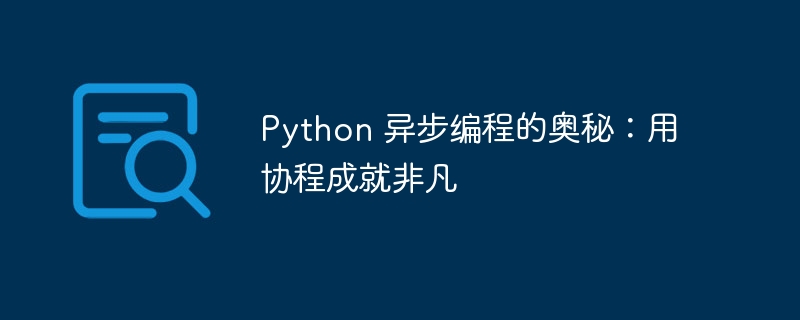

Basic principles of coroutinesA coroutine function, also known as a generator function, is a special function that pauses its execution and returns a value. When it is time to continue execution, the coroutine function can use theyieldstatement to send the value to the caller and pause itself. The caller can later resume the execution of the coroutine function by calling thenext()method to obtain the next value returned by the coroutine function.
Inpython, a coroutine is declared with theasync defkeyword and its execution is paused using theawaitkeyword . Theawaitstatement returns control to the event loop, allowing other coroutines or tasks to execute. When the suspended task is completed, the event loop will automatically resume the execution of the suspended coroutine function.
Event LoopThe event loop is a key component inPythonfor handling asynchronous events. It continuously polls the event queue and reacts to events in the queue. When a coroutine function pauses execution, it adds itself to the event queue. The event loop handles events in the queue, such asNetworkrequests or timer events, and resumes execution of the coroutine function after the event completes.
Benefits of coroutinesUsing coroutines for asynchronous programminghas many benefits, including:
Advanced coroutine technology
In addition to basic coroutines, Python also provides a series of advanced coroutine technologies to further enhance the capabilities of asynchronous programming. These technologies include:syntax was introduced in Python 3.5, providing a cleaner, easier-to-use coroutine syntax.Practical ApplicationCoroutines are widely used in various fields, including:
in conclusionCoroutines are the cornerstone of asynchronous programming in Python, and they enable developers to write high-performance, high-concurrency applications. Through coroutines, developers can make full use of the event loop to efficiently handle concurrent tasks in a non-blocking manner. Advanced coroutine technology further enhances the capabilities of coroutines, making them valuabletoolsin a wide range of application domains.
The above is the detailed content of The secret of asynchronous programming in Python: Achievements with coroutines. For more information, please follow other related articles on the PHP Chinese website!




